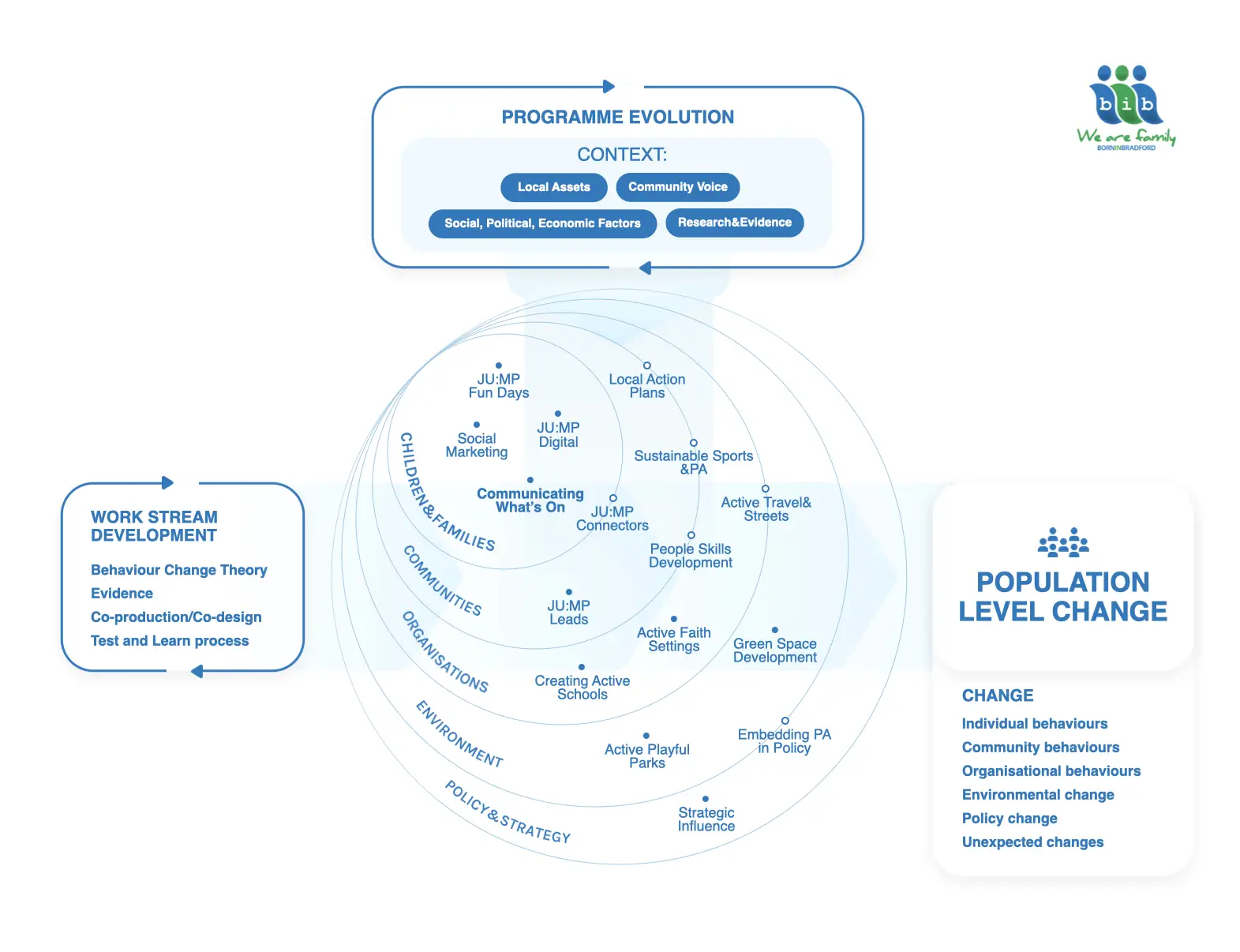The JU:MP programme is built on a theoretical model of whole systems working which broadly maps onto the socioecological model and underpins the JU:MP delivery model that has evolved over the last four years.
There is not an agreed definition for whole system approaches, so when developing JU:MP we chose to be guided by the work of Bagnall et al. (2019). He suggests there are three elements to whole system working:
A fundamental belief for us was that the whole is more than the sum of the parts.
Crucial to our approach was to have a deep understanding of the context in which we are working. We gained this when developing the JUMP programme by using local data collected from our BiB research, national and international research, community, partner and family consultations, and local asset mapping. We also drew from evidence-based recommendations including the ISPAH “8 investments that work for physical activity” and the WHO Physical Activity Global Action Plan. We continue to appraise the context to ensure that the programme evolves with changing social, economic and political landscapes, developments in research, changes in assets and changes in population needs.
During the development phase of JUMP five themes emerged where we should focus our interventions; Children & Families, Communities, Organisations, Environment and Policy & Strategy. These broadly map onto the socioecological model but also a key component of whole systems working is linking up work across the system and so it was important to create mechanisms for this. For JU:MP, these mechanisms included the Active Bradford partnership, the physical activity strategy group, the JU:MP neighbourhood action groups and action plans, local community of learning events, Community Engagement Managers and the JUMP Connectors.

The next part of the model are the 16 workstreams, that sit in at least one and often multiple themes. These workstreams were underpinned by behaviour change theory, were evidence-based and were co-produced, codesigned or locally tailored by working with relevant stakeholders, including children and families. Monitoring and evaluation of these workstreams helped to develop, improve and adapt them to changes in the context of the system as time went on.
Each workstream is located within one of the themes that represent a different layer of the system. While located in a layer, it is important to note that most workstreams cut across multiple layers of the system. Five workstreams provide a universal offer across all neighbourhoods (strategic influence and policy, people skills development, young leaders, JU:MP digital, social marketing, communicating what’s on), and the other workstreams are delivered at a neighbourhood level.
We aimed to test, if by taking this complex evolving systems approach, we could create population-level change in physical activity. While the JU:MP programme targeted children and young people in Bradford, we strongly believed this theoretical model could support place-sensitive approaches in different contexts for different populations, and even different health behaviours. The results over the last few years have helped reinforce that view.
"*" indicates required fields